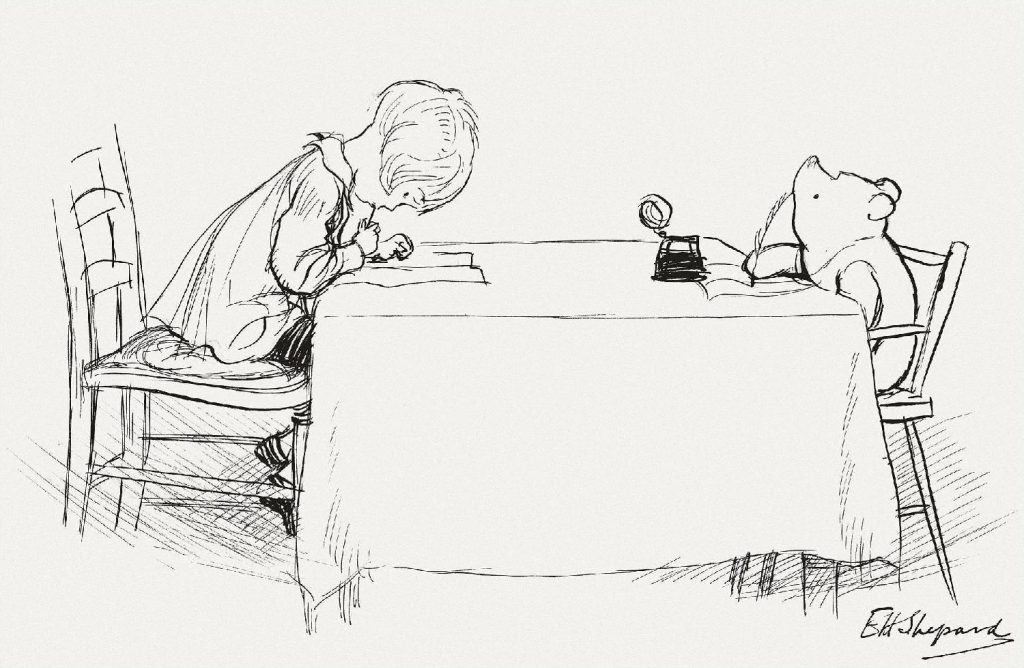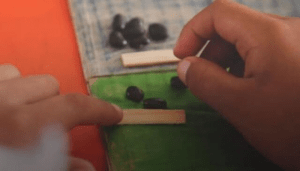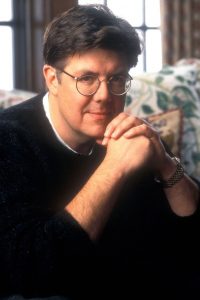Imagine going back in time to World War II. You’re somewhere in the battle zone staring up at a cloudy gray sky, hoping you would be going home soon. But you didn’t know what home meant as your hands kept squeezing the weapon that was made to save some lives by ending others. This was the world now, covered in darkness and remembered in death. It never felt like it would never end for you and for the millions of others participating in the war. But then you remembered a story your mother read to you when you were a child. You slowly would press your lips together and start to whistle. It was a familiar tune that a yellow bear would blow when he and a little boy walked through the woods together.
The tune you were whistling was made by a man unlike you or I; he was a creator of a story that would be known to children for decades to come. But the 1940s is too far in the future for the beginning of this story. We need to go back to the Great War, where a young hesitate solider named Alan Alexander Milne stood with his countrymen in the trenches along the Western Front. Young Alan Milne was a writer who had been forced into a role he truly never wished play. He hated the idea of war. But fate can be cruel, and from 1914 to 1918, his eyes were bombarded with only death, hopelessness, and darkness.1 War can change how a person sees the world, and that is what it did to Milne. The colors of black and red stained his eyes and would be burned into his mind when he eventually came home. Once Alan did returned to his civilian life, he suffered severely from what they called Shell Shock. Because of those experiences in the trenches, he slowly drifted away from his wife and son. Milne couldn’t get over what he saw and experienced in those trenches. But what was worse was that he didn’t understand how to cope.

So, Milne would sit at home and try to make some attempt at his new-found project, but he usually only came up with simple verses that he had some friends read to judge how they felt about them.6 But Milne wasn’t getting anywhere with only having more people suggest more topics to think about. What was he going to write about? A children’s book? Who and what? When and where, and why? Milne was starting to get stumped, but luckily he wasn’t alone anymore. On the floor above him, a child quietly played in the nursery with a toy bear only one year younger than he was.7
One day, as Milne was sitting at his desk, he brought his sharp eyes away from his work, noticing someone that he found himself distant from and who went by the name, Billy Moon. If you asked anyone close to the Milne’s family, they would say that their only son was named Billy Moon, but in fact, he wasn’t.8 His actual name was Christopher Robin Milne. And suddenly, in his father’s mind, an idea was forming. Alan slowly started to observe how Christopher played with his stuffed animals. But more importantly, he observed how the little boy gave them life. He would shout and dance with a smile on his face that would make anyone want to join in too. Christopher would grab his soft yellow teddy bear’s paw and race into the five-hundred-acre woods that surrounded their home. Alan Milne would see his son run with eyes full of belief, so that if you saw what he did, you could watch all the other toys run after him.

At night, Milne started to talk to Christopher about his toys, and how each response he made to his toys made him feel as though they were real, that all the laughs and complaints they made really did happen. One instant, the yellow bear got so angry Milne and Christopher that they found him face first on the floor pouting: “… Pooh was missing from the dinner-table which he always graced. She asked where he was. ‘Behind the ottoman,’ replied his owner coldly. ‘Face downwards. He said he didn’t like When We Were Very Young.’ Pooh’s jealousy was natural. He could never quite catch up with the verses.”9
Soon, father and son started spending a lot of time together. Milne would even join his son into the woods. He saw how Christopher jumped and yelled as if expecting something to yell back, and there were times when it felt like there was a soft gentle voice echoing towards the pair.10 The clock was still ticking for Alan Milne to produce something to publish, and he eventually got away from small verses to writing some short stories of Christopher Robin and his friends. Milne even started to read them to Christopher at the end of the day, jotting down whatever comment Billy or his teddy bear had to offer.11 Alan Milne was not only bonding with his son he barely knew, but he was also, maybe without even realizing, writing away some of the ghosts that followed him back from the war.
What is better for a child? A story that has an end, or a book filled with simple tales whose messages will change as you grow older? Before he could continue to write, there had to be a home for everyone, and why not where all the playing actually took place. Alan Milne based the foundation of Hundred Acre Woods on the forest 500 Acre Woods (Ashdown Forest), but that was not all he kept the same. For the characters he went with his son Christopher Robin (leaving out the last name) and the toys he played with, and eventually other children would as well: Piglet, Kanga, Roo, Tigger, Eeyore, then of course Winnie-The-Pooh. Still, Alan Milne was the creator of this world and he added some of his own characters known to us as Rabbit and Owl.12
It still wasn’t over yet and Alan Milne had a lot of work to do. He continued writing short verses along with reading them to his son to make sure each chapter and each new adventure lived up to the “real” characters’ approval. And he didn’t stop there, Milne went on to have his perspectives in the writing shift from first person to third person, then lastly to second person.13 He wanted the reader truly to feel a part of their private world. After enough stories had been compiled together for a book, he put them in the order he thought best before meeting with Ernest H. Shepard, who would eventually come to illustrate all three books that Milne would publish based on his son. What made Shepard’s work so memorable is that even though he drew them as toys, he made them feel real as he kept the character Christopher Robin looking like Milne’s only son.14 Even when Disney bought Winnie-The-Pooh and created their own version of the characters, Shepard’s work is still symbolizing the realness of childhood.

The book was published on October 15, 1926, and it was called Winnie-The-Pooh after the name of the gentle teddy bear that changed so often before the young Christopher Robin Milne decided to settle on the title that would be written in history. England fell in love with the stories, and became obsessed with how there was truthfulness in each word and in every thought muttered on each page. This truthfulness would eventually lead to a variety of complications between Milne and his son, who would develop resentment towards his father for “stealing his childhood.”15 But both men were cast into the shadow of Winnie-The-Pooh because of how much the world needed him. The second decade of the twentieth century was a time of death, and a new war was not far off. Winnie-The-Pooh, Now We Are Six, and The House at Pooh Corner were all people had that reminded them that there used to be a better place, an enchanted place where you walked on the ground and as the leaves would snap under your feet, a little yellow bear would be eating some honey, and hearing the crackling of the leaves would decide to leave some honey for you too, if he didn’t eat all first.
- Alan Milne, Autobiography: A. A. Milne (New York: E. P. Dutton & Co., Inc., 1939), 247-248. ↵
- Alan Milne, Autobiography: A. A. Milne (New York: E. P. Dutton & Co., Inc., 1939), 247-245. ↵
- Alan Milne, Autobiography: A. A. Milne (New York: E. P. Dutton & Co., Inc., 1939), 276. ↵
- Alan Milne, Autobiography: A. A. Milne (New York: E. P. Dutton & Co., Inc., 1939), 280-281. ↵
- Christopher Milne, The Enchanted Places (New York: E. P. Dutton & Co., Inc., 1974), 36. ↵
- Alan Milne, Autobiography: A. A. Milne (New York: E. P. Dutton & Co., Inc., 1939), 278-281. ↵
- Christopher Milne, The Enchanted Places (New York: E. P. Dutton & Co., Inc., 1974), 76. ↵
- Alan Milne, Autobiography: A. A. Milne (New York: E. P. Dutton & Co., Inc., 1939), 278. ↵
- Christopher Milne, The Enchanted Places (New York: E. P. Dutton & Co., Inc., 1974), 63. ↵
- Christopher Milne, The Enchanted Places (New York: E. P. Dutton & Co., Inc., 1974), 63. ↵
- Alan Milne and Ernest H. Shepard, Winnie-The-Pooh (New York: Dell Publishing Co., Inc., 1926), 160-161. ↵
- Christopher Milne, The Enchanted Places (New York: E. P. Dutton & Co., Inc., 1974), 76. ↵
- Alan Milne and Ernest H. Shepard, Winnie-The-Pooh (New York: Dell Publishing Co., Inc., 1926), 3-22. ↵
- Alan Milne and Ernest H. Shepard, The House At Pooh Corner (New Work: Dell Publishing Co., Inc., 1928), 73-75. ↵
- Christopher Milne, The Enchanted Places (New York: E. P. Dutton & Co., Inc., 1974), 166. ↵



41 comments
Damian Jennings
Winnie the Pooh has always been a friendly animated show, but to understand the background of the characters and what era it was designed in, really opens up my mind to the possibilities, that these characters were inspired during the time of World War II. The war must have been extremely difficult to overcome and I commend the founder for his work.
Roman Olivera
This article was a great read. I never really heard anything about the author of these great stories. The collection of these books is so great and almost every kid has a memory of reading or watching Winnie the Pooh. I had no idea that Christopher Robin was based on actual child. I also never knew that Winnie the Pooh was not the first name choice for the bear. This article was really informative and I loved the way the writher went into the background of the author. Alan Milne was a great writer and his stories will live forever in history.
Daniela Martinez
I can still remember the first time my mom read me Winnie the Pooh when I was little. Even now Winnie the Pooh is my favorite fictional character ever so much that I was super excited to go see the Winnie the Pooh movie that was released earlier this year, which I loved. I loved this article because it served as a reinforcement to my previous knowledge on the writer of Winnie the Pooh. It gives readers a backstory and then transitions to the actual story in a way that is natural and flows well. It’s interesting to note that Winnie the Pooh emerged from Alan bonding with his child. This book is one of my personal favorites because it’s pure and comes from a place in which Alan was inspired by the happiness of his child.
Lynsey Mott
Winnie the Pooh will always have a special place in my heart, I always read the books and watched the shows as a child and even into adulthood with the new movie Christopher Robin and how it kind of portrays how Milne was with his child versus how Christopher Robin was after he grew up and how he was with his child. Now I did know some of the story on how Winnie the Pooh was made; which was basically it was made after Milne went to war and came back and basically tried to cope with the war and how it was about his own child. So learning about how Winnie the Pooh was developed is so loving and different, not many people say they wrote a book about their child and the adventure said child has with their stuffed bear. Now Pooh Bear is so much more than just a soft yellow teddy bear.
Jose Fernandez
This story really amazed me. I watched the movie about it last year and I really enjoyed it. I think this is a great topic for an article! It is very interesting and I really liked that it has facts that weren’t presented in the movie. I grew up watching Winnie the Pooh so I really related to this story. The thing that shocks me the most about this story is that the real Christopher Robin doesn’t even like the attention this story generated.
Nathan Alba
Personally I remember having a Winnie The Pooh blanket. The stories, although much older, were perfect for kids even today. I thought it was kind of funny that Milne would observe his kid to make the stories come to life, but then again that’s basically all of story telling. Our ideas come from somewhere or something. It does bring back memories, remembering how real it seemed to have an imagination as young Christopher Robin did. Back when you could bring to life inanimate objects and not have to worry about the stresses of life.
Emily Jensen
Loved this story! My family and I have read the stories and watched the Winnie the Pooh movies for as long as I can remember. It is really interesting to read the history behind the author’s creation of the characters and their story. I really enjoyed looking at the images that the author put along with her story, little Christopher Robin and his Winnie the Pooh were so cute!
Sofia Andrade
Growing up I watched Winnie The Pooh but until reading this article I did not know the backstory of how it came to be. It is interesting to know that this story was inspired by Milne son. After coming back from the war it was difficult to connect with his son but through his writing he was able to spend more time with him.
Jasmine Rocha
I never knew how Winnie the Pooh came to life because of the imagination of a child and a father who was willing to write those adventures. Knowing how the Milne had haunting memories of the war because he was forced to join when he wanted to be a writer. At least, in the end, he was able to become a successful writer. Unfortunately, it seems like after his son grew up they argued on how Milne stole the creative ideas of his son but then again it could be argued that he was an inspiration but the words were truly those of Milne. It is great to know where our favorite yellow bear came from.
Maggie Amador
Before this article, I had thought that Winnie-The-Pooh was created only by Disney and I had no idea of its origins. I think it’s interesting how Winnie-The-Pooh was able to influence so many lives during a time of death and sadness, and it’s also ironic how something that could bring so many people together could tear the bond between a father and his son.